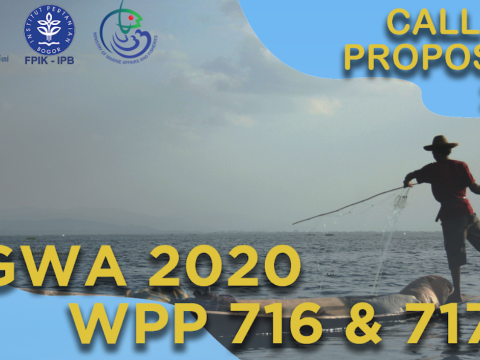Using a Bioeconomic Model To Create a More Sustainable Small Pelagic Fishery in FMA 716
Located in the Sulawesi Waters and North Halmahera of Indonesia, Fisheries Management Area 716 (FMA 716) is one of the most thriving fisheries in Indonesia, known especially for its contingency of small pelagic fish, which live in the pelagic zone of the ocean ranging from the surface of the ocean to the near bottom. As one of the FMAs in the Indonesian archipelago, FMA 716 plays an important role in the development of Indonesia’s marine and fisheries sector. Out of 118 pelagic species found within the area, FMA 716 contains 25 species, offering a rich potential for fishing in the area.
A fellow of Conservation Strategy Fund’s Groundwork Analysis 716 & 717 Program, Daisy Monica Makapedua is a lecturer at Sam Ratulangi University, Manado, where she and her colleagues are conducting research on a bioeconomic model for small pelagic fisheries within FMA 716. Through her research, Daisy’s consortium is working to establish a sustainable management strategy for FMA 716 by calculating the Maximum Sustainable Yield (MSY) and Maximum Economic Yield (MEY) of small pelagic fisheries in the area.
In order to determine the best model for a sustainable small pelagic fishery in the area, Makapedua conducted extensive research from October of 2020 through March of 2021 across Manado, Bitung, Kwandang, Tarakan, and North Halmahera. In addition, she collected the data from the government institutions to supplement her own research on the issue and gather information on fishing gear and vessels in the area.
On June 14, 2021, Daisy’s consortium shared the results of their research with the public by inviting local stakeholders of FMA 716 in Manado to a joint in-person and virtual presentation. The event was attended by 25 participants and was well-received by all attendees. “Right now, the government focuses on the management of sustainable fisheries, but the government needs more data on capture fisheries in FMA 716 to support the policy,” Makapedua says. “Using a bioeconomic model can be a helpful tool in examining the fisheries in the area as a whole.” Using her research, Makapedua is hopeful that local stakeholders will evaluate the current condition of the small pelagic fisheries, and work towards implementing a more sustainable management strategy.

In addition, Makapedua and her team noted several other important research findings, which they believe will impact fisheries management in FMA 716, including:
- While the catch of capture fisheries in FMA 716 increased between the years 2005 and 2015.
- The current fisheries stock in FMA 716 has a strong supply of fish and a low utilization rate.
- The Fish Abundance Index increased between the years 2018 and 2020, yet their utilization rate remains low, which indicates that local fishermen can take advantage of this FMA without damaging the supply chain.
- The small pelagic fishery supply chain distribution is dominated by the cities/regencies in the North Sulawesi Province, but only a small portion of the distribution goes to Gorontalo and Central Sulawesi Province.
- The current supply of fish stock in FMA 716 is not only capable of fulfilling the needs of the entire North Sulawesi Province but also the surrounding areas, making it possible to export fish to other regions in need.
These findings not only show that the small pelagic fishery in FMA 716 is still in good condition, but also that there is potential for creating a sustainable fisheries sector there, which local fishers can then utilize. “We really need this kind of data,” says Tienneke Adam, the Head Chief of North Sulawesi Marine and Fisheries Agency, who was impressed by the results of the presentation and by Makapedua and her team’s findings. “This data will help us formulate sustainable policies in the future, and also serve as a good model for us to apply the same principles within the Ministry of Marine and Fisheries Affairs to control and monitor the sustainability of the small pelagic fishery.”

Through her research and dissemination, Makapedua’s consortium was able to build strong relationships with the local stakeholders of FMA 716, and share resources that are critical for the improvement of FMA 716. For the next steps, Makapedua will be sharing her findings with the policymakers of FMA 716, and is hopeful to see her work implemented on the ground.
- Log in to post comments

